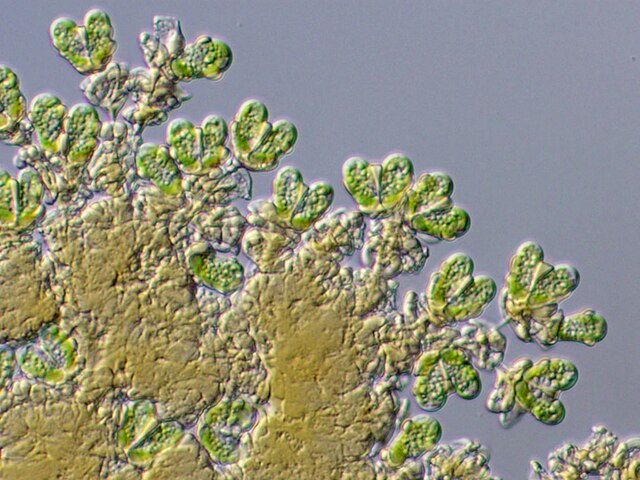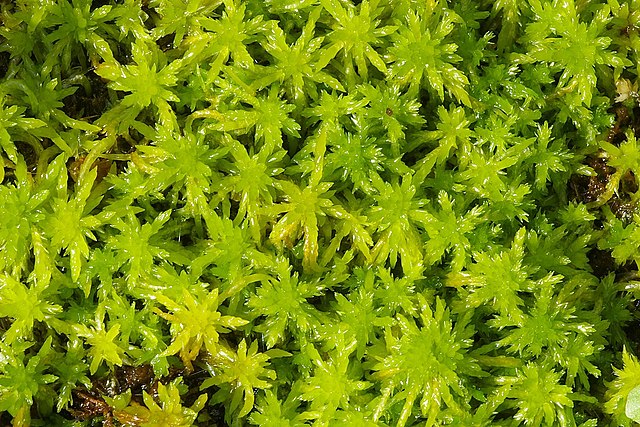Top Qs
Timeline
Chat
Perspective
Sorthat Formation
Geologic formation in Bornholm, Denmark From Wikipedia, the free encyclopedia
Remove ads
The Sorthat Formation is a geologic formation on Bornholm, Denmark, and the Rønne Graben, Baltic Sea, from the Latest Pliensbachian to Late Toarcian. It holds plant fossils and invertebrate traces, overlain by fluvial and lacustrine deposits of the Aalenian-Bathonian Bagå Formation.[2] Initially part of the Bagå Formation until 2003, it spans the Latest Pliensbachian to Early Aalenian.[3][4] It reflects a deltaic to marine setting with eastern river systems forming in the Toarcian.[2] Early Pliensbachian volcanism from southern Sweden extended across the North Sea.[5] The Central Skåne Volcanic Province and Egersund Basin contributed volcanic material, affecting tectonics.[5] Early Jurassic porphyritic nephelinite lavas in the Egersund Basin, akin to those in the formation's clay pits, suggest fluvial sediment transport to the Grimmen Formation and Ciechocinek Formation.[5] The Grimmen Formation is its sister unit.
Remove ads
Description
Summarize
Perspective

Bornholm's Lower-Middle Jurassic includes the Rønne (Hettangian–Sinemurian), Hasle (Early–Late Pliensbachian), Sorthat, and Bagå Formations. Coal-bearing clays and sands overlie the Hasle Formation, divided between the Sorthat and Bagå.[1] The Sorthat Formation aligns with the Röddinge Formation, sharing a fluvial system, and correlates with the Ciechocinek Formation, Fjerritslev Formation, and Rya Formation.[1] Originally termed Levka, Sorthat, and Bagå beds, its key exposure is the Korsodde section.[2] Faulting and scarce marine fossils hinder stratigraphic clarity.[2] Palynological data from the Levka-1 core and Korsodde section date it to Late Pliensbachian–Toarcian, possibly Early Aalenian.[6][7][3] Megaspores indicate Toarcian–Aalenian strata.[8] It features bioturbated sands, heteroliths, clays, coal veins, and dinoflagellates, suggesting brackish to marine settings, capped by Bagå deposits.[6][1]
The Sorthat Formation's lithology varies.[1] The Levka-1 well reveals fining-upward units, 3–14 m thick, with coarse sand, muddy, coal- and mica-rich sands, clays, and coal seams.[1] Parallel lamination dominates, with minor cross-bedding.[1] Abundant plant fragments and quartz, but no marine palynomorphs, indicate a coastal delta plain.[6] This mirrors the Ciechocinek Formation's Toarcian–Bajocian deltaic shoreline.[9][10] The North German Basin shows four sea-level fluctuations forming delta generations, with Toarcian regressive deltas depositing 40 m in Prignitz and Brandenburg.[9] Palynomorphs tie to the Sorthat Formation.[9]
The upper formation (~40 m) has bioturbated sands, heteroliths, syneresis cracks, pyrite nodules, and ichnofossils like Planolites and Teichichnus, reflecting nearshore lagoons and channels.[1] The 93 m Korsodde section, with organic-rich sands, suggests fluvial channels tied to coastal lakes, with plant remains and ichnofossils like Diplocraterion.[1] The top features fine, yellowish-brown sands and sandstones with bioturbated, wave-rippled beds.[1]
At Korsodde, the environment includes the following:
Remove ads
Biota
Summarize
Perspective
The Sorthat Formation hosts a rich Pliensbachian–Toarcian flora, one of Europe's most complete for this period, with significant Jurassic palynological deposits.[4][7][8][12] The flora, including gymnosperms, ferns (e.g., Dicksonia, Coniopteris, Osmundaceae), and thin-cutinised leaves like Podozamites and Equisetales, suggests a warm, humid climate conducive to diverse vegetation.[13]
Environment


The Sorthat Formation, deposited in the Rønne Graben and on Bornholm's coasts, reflects a deltaic to marine environment, with the Grimmen Formation as its sister unit. A modern analog is New Zealand's Northland humid coastal forests, where peat-forming woodlands thrive. The Stina-1 well shows sand, clay, and coal, indicating an emerged graben.[14] High kaolinite and reworked Carboniferous palynomorphs suggest erosion of a Carboniferous regolith.[15] A Late Pliensbachian regression allowed coal deposition, halted by an Early Toarcian transgression.[13] The Levka-1 well and Korsodde section show lagoons, channels, and floodplains, with rapid subsidence in the Rønne Graben during the Toarcian.[16] Shoreface deposits with bioturbation mark a deepening trend, correlating with the Fjerritslev Formation.[17] Depositional settings include the Levka Beds, interpreted as fluvial channels, floodplains, and peat swamps. Marine palynomorphs (e.g., Nannoceratopsis) indicate lagoonal settings.[18][19] The Sorthat Beds represent delta plain deposits with pyrite nodules and Arenicolites traces.[18] The Korsodde Section was a fluvial channel sands with coal and rootlets, transitioning to lagoons and palaeosols, with dinoflagellates (e.g., Mendicodinium).[18][19] Outside emerged Bornholm, offshore Rønne and Kolobrzeg grabens include mostly fluvial-coastal layers, fed by regional currents.[20]
The Sorthat Formation, with the Grimmen Formation as its sister unit, records significant vegetation changes during the Early Toarcian, linked to carbon cycle perturbations and the Toarcian oceanic anoxic event, driven by large-scale volcanism.[21] A modern analog is New Zealand's Northland humid coastal forests, supporting peat-forming woodlands.


In the Late Pliensbachian, pollen assemblages, dominated by Cupressaceae (e.g., Perinopollenites) and cycads (Cycadopites), indicate a warm, humid Mediterranean climate.[22] During the Toarcian event, spore-rich layers reflect a shift to ferns and lycophytes, suggesting increased humidity.[22] Post-event, Hirmeriellaceae pollen (e.g., Corollina, Spheripollenites) dominates, indicating a drier, warmer climate.[22] Woody vegetation shows changes in carbon isotopes, with pollen from Sciadopityaceae, Miroviaceae (Cerebropollenites), cycads (Chasmatosporites), and Corollina.[21] Macroflora, mainly from the Hasle clay pit and Korsodde section, includes 68 species, 50% ferns.[23][24][25] The Late Pliensbachian flora, rich in ferns and sphenophytes, grew in marshy floodplains along a meandering river, with Bennettites as shrubs and conifers (e.g., Pagiophyllum) and ginkgoaleans as trees, reflecting a warm, seasonal climate.[23] In the Toarcian, Hirmeriellaceae conifers (95% of pollen), seed ferns, Bennettites, and Czekanowskiales dominate, with Pagiophyllum and Corollina torosus indicating high temperatures, aridity, and seasonal wildfires.[26] Wood fragments, both macroscopic and microscopic (0.25–1 mm), are common in Korsodde's nearshore deposits.[27]
Coal seams, mainly from Levka-1 and Korsodde, formed in anoxic, nutrient-rich swamps.[28] Peat accumulated rapidly (~1 mm/yr), akin to Central Kalimantan, in a warm, humid climate.[28][29] High huminite content (e.g., Eu-ulminite, densinite) indicates anoxic conditions.[28][30] Wildfires, evidenced by charcoal, increased during the Toarcian oceanic anoxic event, reflecting drier conditions.[31][32] Coals can be found at Levka-1 (112 m of coal, sand, and clay with abundant coalified wood), representing fluvial channels and floodplains with lagoons.[28] At Korsodde six coal seams from a coastal lagoon setting can be found, with huminite-rich coal and dinoflagellates like Mendicodinium reticulatum.[28]
Fungi
Color key
|
Notes Uncertain or tentative taxa are in small text; |
Phytoplankton
In the Lower Jurassic of Bornholm there were several successions of nearshore peat formations with dinoflagellates.[28] Coal-bearing strata were deposited in an overall coastal plain environment during the Hettangian–Sinemurian, and then during the Early Pliensbachian deposition was interrupted until the late Pliensbachian–Lowermost Toarcian due to a sea regression.[28]
Bryophyta
Lycophyta
Equisetales
Pteridophyta
"Peltaspermales"/Indet. Spermatophytes
Erdtmanithecales
Cycadophyta
Bennettitales
Ginkgoales
Coniferophyta
Amber
Ichnofossils
Remove ads
See also
- Blue Lias, England
- Charmouth Mudstone Formation, England
- Hasle Formation, Denmark
- Zagaje Formation, Poland
- Drzewica Formation, Poland
- Ciechocinek Formation, Poland
- Borucice Formation, Poland
- Rotzo Formation, Italy
- Saltrio Formation, Italy
- Moltrasio Formation, Italy
- Marne di Monte Serrone, Italy
- Calcare di Sogno, Italy
- Podpeč Limestone, Slovenia
- Coimbra Formation, Portugal
- El Pedregal Formation, Spain
- Fernie Formation, Canada
- Whiteaves Formation, British Columbia
- Navajo Sandstone, Utah
- Aganane Formation, Morocco
- Tafraout Group, Morocco
- Azilal Formation, Morocco
- Budoš Limestone, Montenegro
- Kota Formation, India
- Cañadón Asfalto Formation, Argentina
- Los Molles Formation, Argentina
- Kandreho Formation, Madagascar
- Elliot Formation, South Africa
- Clarens Formation, South Africa
- Evergreen Formation, Australia
- Cattamarra Coal Measures, Australia
- Hanson Formation, Antarctica
- Mawson Formation, Antarctica
References
Wikiwand - on
Seamless Wikipedia browsing. On steroids.
Remove ads



































































